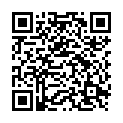|
|
|
| Module code: KI649 |
|
4V (4 hours per week) |
|
5 |
| Semester: 6 |
| Mandatory course: no |
Language of instruction:
German |
Assessment:
[still undocumented]
|
KI649 Computer Science and Communication Systems, Bachelor, ASPO 01.10.2014
, semester 6, optional course, course inactive since 30.09.2009
|
60 class hours (= 45 clock hours) over a 15-week period.
The total student study time is 150 hours (equivalent to 5 ECTS credits).
There are therefore 105 hours available for class preparation and follow-up work and exam preparation.
|
Recommended prerequisites (modules):
None.
|
Recommended as prerequisite for:
|
Module coordinator:
Prof. Dr. Thomas Kretschmer |
Lecturer:
Prof. Dr. Thomas Kretschmer
[updated 12.07.2010]
|
Learning outcomes:
After completing this course, students will:
- understand the structure and definition of XML
- have a basic understanding of Unicode
- be able to develop DTDs and XML schemas
- have a thorough grounding in XLSTs and how to apply them to specified tasks
- have been introduced to object formatting
- know and be able to apply the programming interfaces SAX and DOM using Java
- have learned how to make efficient use of relevant development tools.
[updated 13.03.2007]
|
Module content:
1. Introduction and fundamentals
1.1. The structure of an XML document
1.2. The XML parser Xerces
2. Document type definitions (DTDs)
2.1. Validation
2.2. Document type declarations
2.3. Internal DTDs
2.4. Element declaration
2.5. Attribute declaration
2.6. General entity declaration
2.7. Parameter entity declaration
2.8. Conditional sections
3. Namespaces
3.1. Introduction
3.2. Syntax
4. Unicode
4.1. Coding
4.2. Combined character sequences
4.3. Character codes
4.4. Coding and XML
4.5. Tools
5. XSL transformations (XSLT)
5.1. XSLT processors
5.2. The tree structure of an XML document
5.3. Transformation procedures
5.4. Templates
5.5. Template rules
5.6. XSLT elements
6. Introduction to XPath
6.1. Location paths
6.2. Predicates
6.3. Functions
7. More XSLT elements
7.1. Elements
8. XPath
8.1. Data types
8.2. Location steps
9. More XSLT elements (part 2)
9.1. Elements
9.2. Empty space
10. Formatting objects
11. XML schemas
11.1. Introduction
11.2. Additional information
12. Simple API for XML (SAX)
12.1. Introduction
12.2. Residual program
12.3. The ContentHandler
12.4. The ErrorHandler interface
12.5. Features and properties
12.6. Filters
13. Document Object Model (DOM)
13.1. Introduction
13.2. DOM parser
13.3. Tree structure
13.4. Node types
13.4.1. The node interface
13.4.2. Node types
13.5. DOM output
13.5.1. Introduction
13.5.2. Serialization procedure
13.5.3. Formatting
13.6. Creating a DOM tree
[updated 13.03.2007]
|
Recommended or required reading:
HAROLD E.R., MEANS W.S., XML in a Nutshell, O’Reilly, 2004
KAY M., XSLT 2.0, Wrox Press, 2004
[updated 13.03.2007]
|
Module offered in:
SS 2006,
SS 2005
|


